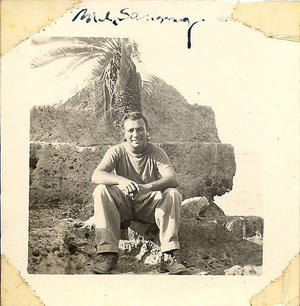In reading over several of the oral history interviews in the Archives recently, I was struck at the important role that mentors can play in a young person's life – often changing the direction of that life completely. While some children decide to become an astronaut or a nurse in childhood, others don't see a clear road in front of them. Mentors have a different view of the young person than they have of themselves, and see potential that others may not. They offer advice, encouragement, and jobs that lead the young person down a path they would never have taken.


Sammy Ray (1919- ) grew up in rural Mississippi. He liked to hunt and learned a bit of taxidermy from a local birder George Vaiden. He recalled, "In the summer of my junior year in high school, I was offered a job as a postal clerk for sixty dollars a month. My parents wanted me to take it because, at that time sixty dollars a month was pretty good change, but I would have to leave school." Ray went to see his mentor Mr. Vaiden, who said, "Sammy, if you don't finish high school, you'll make the greatest mistake of your life." Vaiden hired Ray to do taxidermy, if he stayed in school, and then encouraged him to attend a local college. He introduced Ray to other naturalists, including Alexander Wetmore, Secretary of the Smithsonian. While serving in the Pacific during World War II, Ray collected birds for the US National Museum, corresponding regularly with Dr. Wetmore. At the close of the war, he went to graduate school and is still professor emeritus of marine biology at Texas A&M University in Galveston.
In each of these cases, an older person, outside of the family, opened doors for a talented young person – once opened, they studied and worked hard to succeed, but would never have gone in that direction without the mentor. Who do you see around you that has potential they might not be aware of? A bit of encouragement from you could make a huge difference in a young person’s life.
Related Resources
- When Time and Duty Permit: Collecting During World War II, exhibition, National Museum of Natural History
- War Correspondents, The Bigger Picture Blog, Smithsonian Institution Archives
Related Collections
- Record Unit 9521 - T. Dale Stewart Interviews, Smithsonian Institution Archives
- Record Unit 9512 - Frank A. Taylor Interviews, Smithsonian Institution Archives
Produced by the Smithsonian Institution Archives. For copyright questions, please see the Terms of Use.


Leave a Comment